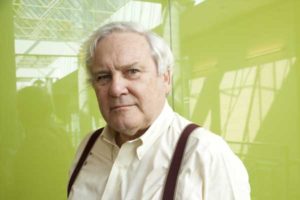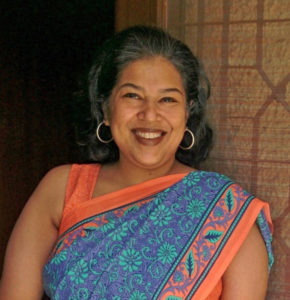“Is Writing a Way of Life”
 Recently I have come across two articles about what is a writerly life. The first one is by well-known Australian writer, Frank Moorhouse, in Meanjin entitled : “Is Writing a Way of Life …and if so, what is the writerly life?” He has been a published author for more than fifty years. It is behind a paywall but here are a few relevant lines from it. It is a long article, well worth paying to read it.
Recently I have come across two articles about what is a writerly life. The first one is by well-known Australian writer, Frank Moorhouse, in Meanjin entitled : “Is Writing a Way of Life …and if so, what is the writerly life?” He has been a published author for more than fifty years. It is behind a paywall but here are a few relevant lines from it. It is a long article, well worth paying to read it.
Literary writers who eschew sales as an ultimate validation live by the legends of those writers who were wrongly dismissed by critics, whose first book was rejected by 100 publishers, and cherish the belief that their talent will be recognised after death. It is also a characteristic of many literary writers to be ignorant of the economics of our
vocation—some have a disdain for concerns with copyright, even publishing contracts or publicity.
…
The objective in all writing is to connect with an authentic readership (this may not happen quickly). Another characteristic of the literary author is the influence of the work on other writers and on other art forms because the literary author is sometimes working at the innovative edge either in thought or form and has a degree of
originality either in form or coming from the personality of the author expressed through unusual style. How-ever, some important writers work within the recognisable conventions of form and genre.
…
Ultimately writers and readers accept that in writing there are many different categories of ‘success’. Some of these categories sound better in French: succès d’estime (reviews, scholarly interest); succès de commerce (sales); succès de scandale; succès de culte. Others include: to be named as a leading regional writer; ‘best of her generation’; best gay, best Greek-Australian; ‘our most interesting young writer’; best ‘emerging
writer’; one of our ‘eminent’ writers; a ‘much loved’ writer; and as a serious writer with a small but devoted readership. There is nothing we can do to determine how we are evaluated at any given time.
It is a bona-fide, continuous, affined readership (not necessarily a large one) that the literary tradition seeks. And of course, some books remain as a valued part of the reading life of the society and ultimately go on, over a lifetime or longer, to outsell the sometimes ephemeral bestsellers of the day (although not all bestsellers are ephemeral
and some are considered literary). As Milton put it in Paradise Lost, ‘Fit audience find, though few.’ But how few?
He argues for public patronage to encourage writers.
Some form of public funding will always remain necessary not only for the encouragement of new talent but also for mid-career and late-career talents—older writers sometimes also require ‘encouragement’ along with financial support. The concept of social rights relating to the special nature of serious writing was absent until the introduction of public lending right (PLR) for payment to authors for the use of their books in public libraries (in 1974, through the initiative of Colin Simpson and the Australian Society of Authors); the reform of the Copyright Act to provide payment for multiple copying of their work and the establishment of the Copyright Agency Limited in 1986 through the initiative of Gus O’Donnell and the ASA; and education lending right in 2001 through the initiative of Libby Gleeson and the ASA for the use of their books in educational libraries. The beauty of these payments is that they are directly tied to the use of the author’s work by the community: the ugliness is that the rates paid are decided by the government of the day and have depreciated over time. Most authors would be happier with the funding of writing if it depended less on schemes ultimately controlled by the government of the day and committees and was based instead on a legislated economic mechanism out of reach of those in power. These sorts of payments, by their nature, protect the author from political discrimination, the problems of peer review and from attacks by those opposed to public funding of the arts.
The place we give the book as a culturally important artefact is evident in our strange economic arrangements for it—a treatment unlike other ‘products’. First, 70 years after the death of the author the work enters the public domain. Second, through compulsory licensing, setting in examinations and teaching by educational institutions
and other uses can occur without the author’s consent (though, now, not without eventual payment by one mechanism or another). Third, the fair dealing provisions of the Copyright Act allow people to quote from and copy the author’s work for scholarship and research work without payment. Finally, the work is available to the
community free of charge through the free library system.
The book is important because so much of the activity of the world and the other arts depends upon the book for knowledge and ideas, for the exploration of intricacy, and we depend upon the telling of stories for our personal growth through imaginative delight, enquiry and engagement and for our stability as a person and as a society.
Nine years ago Indian writer, Madhulika Liddle, who gave up her 9-5 job to devote herself to full time writing says in
“Author-ity, or What Do Writers Really Do?”
This fact – that you do not require a certificate to call yourself a writer – gives the average non-writer the impression that this isn’t a profession to be taken seriously. But, given that literature festivals multiply like rabbits and every year throws up yet another clutch of celebrity writers, it seems obvious (to those not writers themselves) that writers make a lot of money.
…
The reality, though, is far more mundane and far less glorious. Writing is hard work (and rework – there’s a lot of rework involved). Research is time consuming, creativity is hard to sustain and the entire process needs a lot of discipline. It takes years to write a book, and more to edit it up to the level that you would like to see in print.
What’s more, for the bulk of writers, the earnings from books are abysmal. Let me offer an example: my Muzaffar Jang series, launched in 2008, has so far sold only about 6,500 copies. That includes all four titles, and it includes physical copies and e-books. If you take into account the fact that I get a royalty of 7.5% on each physical book and each book costs somewhere between Rs 300-400, you can easily calculate how little money I’ve made off these books. Also, piracy has drained away some of my potential earnings.
…
Most of us have to find avenues other than just writing books in order to stay afloat. Articles for publications, both paper and digital, can bring in income. So can editing assignments, contributions to anthologies and the sharing – through lectures and workshops – of the skill and craft of creative writing. Self-publishing, despite the flak it often draws, can pay significantly higher returns than traditional publishing. Plus, a book with staying power can, as long as it is in print, go on bringing in royalties.
All of that helps me keep writing. That, and the knowledge that the greater my body of work, the greater my chances of increasing my readership. The more books I write, the more I get recognised. Most of all, though, the more I write, the more I realise that my decision to leave the corporate world wasn’t a bad one. Writing is fulfilling in ways it is hard to fully communicate. The research itself is intriguing, digging into a world that you thought you knew, but can still surprise you. Then there is the creation of characters, and the world that they inhabit. It becomes a part of you, and you fall in love with it to a certain degree. It is that love that you share with your readers. I will never be rolling in wealth, and making ends meet will probably be difficult for as long as I only write, but at least I will be content.
The bottomline is that a writer’s profession is a hard one, usually without the advantage of a regular income to keep body and soul together. It may seem glamorous but it is not. Yet as is evident from the two articles that writers make their choices.
Two more articles of interest about the writerly life:
Elizabeth Strout ( ‘If I ever return to a small town, I want you to kill me’ The Guardian, 7 June 2017 )
Laila Lalami ( ‘Laila Lalami on the public writer vs. the private self’ Los Angeles Time, 30 March 2017)
Colson Whitehead ( “Write the book that scares you shitless” LitHub, 23 November 2016)
9 June 2017


No Comments